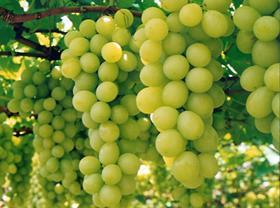
The opening of the doors to China for Australian table grapes may be the big market access story ahead of the 2011 season. But no sooner has the ink dried on that protocol than the industry finds itself on a market maintenance mission in two of its other prized and promising markets, namely Thailand and Vietnam.
Both countries are working to bring their quarantine systems into line with WTO standards. That means conducting import risk analyses for a range of products, including Australian grapes – and implementing new protocols.
“Our concern is that they could come up with a set of rules or procedures that may make the trade commercially less viable,” Jeff Scott of the Australian Table Grape Association told Fruitnet.com. “Thailand’s quarantine department has received our information package in response to their queries and we recently got a draft protocol.”
The Australian table grape industry is negotiating to achieve the best possible outcome on the protocol, according to Mr Scott. For instance, Thailand has recognised the Sunraysia region, Australia’s grape export production hub, as pest-free area, but any outbreak of fruit fly would trigger cold treatment measures at the USDA standard, which is too close to freezing point for comfort.
Australia has completed disinfestation research to show that fruit fly can be zapped at higher temperatures that are not so hard on the fruit. “We’re looking for a protocol that is based on our own scientific evidence, and Thailand is being reasonable about it,” noted Mr Scott.
Thailand has rated in the top-three export markets for Australian table grapes in recent seasons, while Vietnam has also been coming through the ranks. Vietnam is in the early stages of overhauling its quarantine system, and has requested information on fruit fly, which Australia has duly supplied, Mr Scott explained.
“Biosecurity Australia is hopeful that both Vietnam and Thailand will accept the information we’ve given them because there is scientific backing to our cold disinfestation research,” he said. “We’re more favourably placed than other industries in that we’ve done the R&D work so we can respond very quickly to such requests rather than getting caught on the hop.”
The Australian grape industry also has some challenges on the production side heading into the new season. While a wet winter helped to boost soil moisture levels, persistent rain during spring has raised concerns over diseases such as powdery or downy mildew.
“Growers are spraying to combat this, but they’re running out of chemicals and they must prevent these diseases getting hold,” cautioned Mr Scott.
Providing the crop can withstand the disease pressures, the industry should be on course for a “reasonably-sized” yield, albeit a later-bearing one, he said. “The season is running around 10 days to two weeks late,” Mr Scott said.



